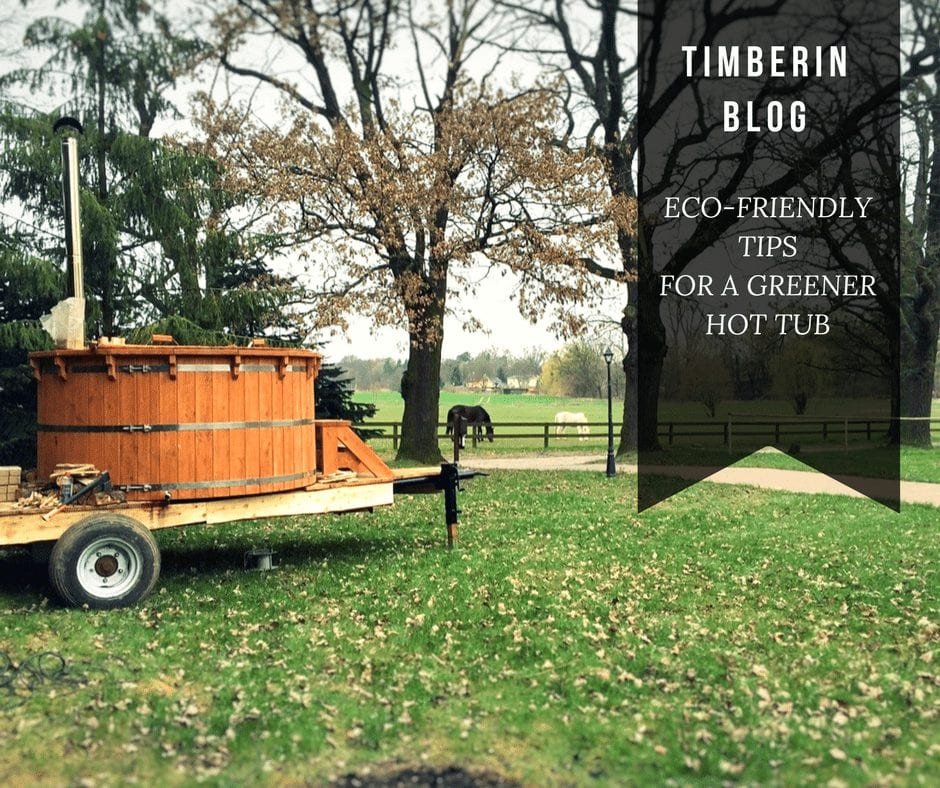Enjoying your hot tub doesn’t have to strain the planet. With a few smart changes to how you heat, treat, and maintain your spa, you can shrink your footprint and save money—while keeping that water crystal clear.
New to wood-fired tubs? Start with how a wood-fired hot tub works, then bookmark our wooden hot tub maintenance guide for ongoing care.
1) Choose Efficiency First
Insulation & a Quality Cover
- Add/upgrade insulation on the sides and base; consider discreet panels where possible.
- Use a tight-fitting, rigid insulated cover; a floating thermal blanket under the lid helps reduce heat loss.
Smart Heating Practices
- Use eco/sleep modes or timers so the heater only runs when needed.
- Lower the set temperature slightly during off-hours—comfort stays high, cost drops.
- Keep filters clean to improve circulation efficiency
Windbreaks & Placement
- Shelter the tub with fencing, hedges, or screens to reduce wind chill and evaporation.
- Position away from prevailing winds; consider partial shading to limit UV degradation.
2) Greener Water Care & Sanitation
Pick a system you can maintain consistently. Compare options in our guide to hot tub water care (chlorine, bromine, salt, ozone & UV).
- Salt/mineral systems: Gentler feel and lower chemical load.
- UV & ozone: Powerful supplemental disinfection that reduces sanitizer demand.
- Enzymes: Break down oils/lotions to keep water clearer with fewer chemicals.
- Good habits: Quick rinse before soaking; maintain pH/alkalinity to keep sanitizers effective.
3) Conserve & Reuse Water
- Extend time between drains by keeping chemistry balanced and filters clean.
- When draining, reuse water for non-edible garden irrigation/cleaning if chemical levels permit.
- Check and fix small leaks fast—tiny drips waste big over time.
4) Sustainable Materials & Thoughtful Maintenance
- Choose sustainably sourced timber and recyclable materials for surrounds/cladding. See best wood for outdoor hot tubs & saunas.
- Use breathable exterior oils/saturants—avoid thick varnishes that trap moisture.
- Stick to a maintenance rhythm: filter cleaning, seal checks, seasonal wood treatment. Our maintenance checklist helps.
5) Seasonal & Behavioural Tweaks
- Switch off jets/lights when not in use; keep the cover on between soaks.
- During cold snaps, use anti-freeze modes or winterize properly—see winter hot tub care.
- Monitor energy use via smart plugs or meters and fine-tune schedules.
Quick Wins (Checklist)
- Upgrade to a premium insulated cover.
- Add windbreaks and discreet insulation panels.
- Adopt UV/ozone support + enzyme routine to cut chemicals.
- Rinse before soaking; maintain pH/alkalinity.
- Reuse drain water responsibly; fix leaks promptly.
Conclusion
Eco-friendly hot tub ownership is about small, consistent improvements: better insulation and covers, smarter schedules, greener water care, and responsible maintenance. Start with one or two changes and build from there—your energy bills (and the planet) will thank you.

